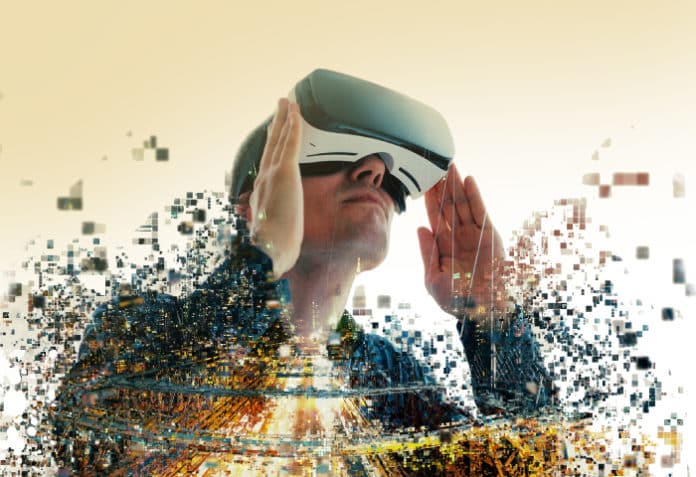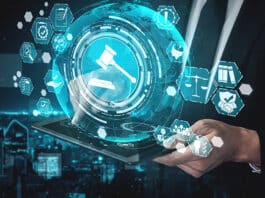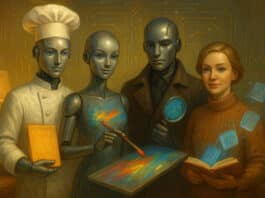The Metaverse is no longer fiction…this virtual world is set to take over our lives, making people all over the globe connect with each other in ways never experienced before. But how relevant or important is the role of open source in this new virtual world? That is the question this article attempts to answer.
The Metaverse has four pillars, namely, virtual spaces, virtual assets, virtual interactions and digital payments. In this new virtual world, co-workers or students can gather for a chat over coffee irrespective of what part of the globe they belong to. Musicians or artists can also interact with fans from around the world in a large digital venue, which would be impossible in the physical world. Today, conferences can reach new audiences unlike before. All this can be achieved due to 5G, augmented reality (AR), virtual reality (VR), and edge computing. These ultra-reliable, low latency services ensure the rendering of 3D graphics and content, and make virtual experiences faster. “Open source will play a huge role in the Metaverse, and will help it evolve faster,” says Dr Lokesh Boregowda, director, Samsung R&D Institute India.
A need for standards
“It becomes very interesting for us to witness this seamlessly connected virtual world as part of the Metaverse. It opens the door to a wide number of possibilities and we have yet to see how far we can truly go with it. It is important to adopt at scale; otherwise, it all falls flat. We have seen some of the standards that ensure interoperability, such as Razer’s open source virtual reality (OSVR). We have seen that it encourages experimentation with the development of headsets as well. But if you look at the flip side, on the device layer you will see the OpenXR standard being badly adopted by manufacturers,” says Vinay Rajagopal, ISV technology lead architect for partner ecosystem at Red Hat.
“Encouraging the development of a decentralised, distributed and interoperable virtual world built on the foundation of open standards also creates multiple opportunities. We have already started seeing a proliferation of 3D environments that have been created by the users themselves. This is where the blockchain has become imperative for the details surrounding a transaction and the digital assets or the avatars. It has become important for us to put these assets on multiple ledgers, while making sure that you understand who has built, sold or purchased a particular digital asset. This is important from a legal aspect too,” he adds.
“Open source is the ground zero for the development of technologies like the Metaverse. All the biggest projects in the last five to ten years that have been able to garner the most attraction are the ones that are open sourced — artificial intelligence, blockchain, and containerisation, to name a few. Open source comes with a great number of benefits. It allows you to collaborate with the smartest minds from every corner of the world; your work gets constantly reviewed and used, and there is a constant feedback loop,” says Gandhali Samant, director, cloud solution architecture, digital and app innovation, Microsoft, India. “A good aspect of working with open source is that there will always be components ready to be used, which saves a lot of time as you don’t need to start from scratch. As the Metaverse continues to gain traction, more tools and platforms will appear to assist the developers.”
“Even though open source comes with a lot of benefits such as quick development and large communities, it is important to note these communities own the software itself. In 2014, a bug was detected in Unison. Its source code had been open for so long that it made it hard to estimate the time hackers had been exploiting it,” says Dr Sumit Kalra, assistant professor in the Department of Computer Science and Engineering, Indian Institute of Technology, Jodhpur. “Today whatever we do with the Metaverse is going to have a tremendous impact on the future of its development. If we are going to continue Metaverse development with open source then it is crucial for us to adopt open standards.”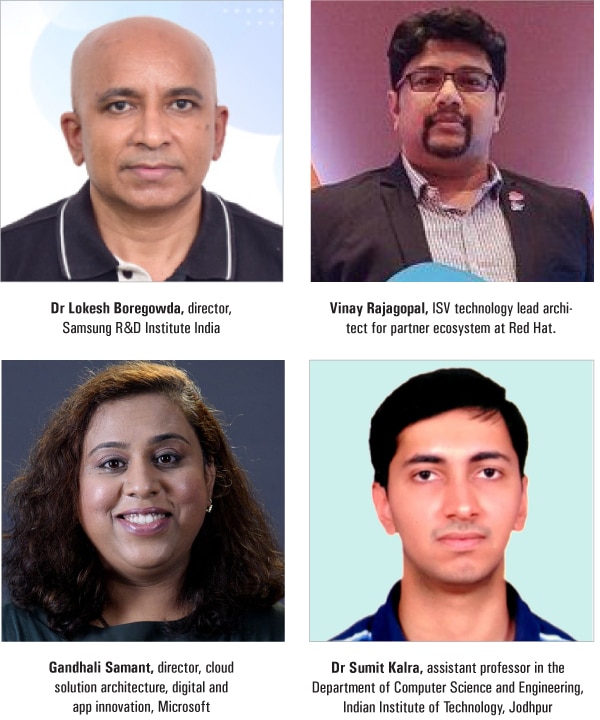
The right hardware
Syed Mohammed Khasim, senior manager, software development – Sitara ARM MPU, Texas Instruments, notes: “In the last couple of decades I have seen the evolution of open source, starting from Linux. It all essentially started for shared software development. The cost of developing software turns out to be a big challenge as it requires a unique skillset. You need to have proper architecture to build software, a design and the necessary components that will allow you to get started with the coding. You then have to validate and commercialise everything before it goes into the hands of developers and, ultimately, the consumers themselves. It all boils down to sufficient investment. But there is a limit to which everyone can invest in software and often it is only for a particular period of time.”
“Open source is no free lunch as somebody is indeed paying for it. When we use the term open source, we mean that we are enabling a shared software development model where we want to collaborate with similar entities that want to invest in the development of software. Hardware is also a fundamental aspect of building software, as without proper hardware in place software cannot be developed. We need low cost hardware that can be afforded by everybody. This is why the Intel ecosystem picked up, because everyone used a personal computer and these systems did not require a huge investment. Over time, embedded systems have also evolved and reduced a lot of the burden of software development. With the entry of Android all the necessary components of open source development have been stitched together,” he says.
“Today, things have evolved tremendously. We are seeing multi-core architecture and multi-core programming even in a simple smart watch today. It requires a great amount of skill to do it all. Not only are you not going to work for free while working on open source software, but your contribution to open source will also provide you with the relevant validation and introduce you to new features. Hence, companies always try to build an ecosystem for open source development as it tends to be more robust and reliable. It is time to define the hardware ecosystem that we are going to enter into, and the kind of software skillsets that are required, in order to assess what we need to build the community around. We also need to find whether it can scale and sustain on its own without a huge sum of money being pumped from big organisations,” adds Khasim.
The legal angle
Biju K. Nair, founding partner, Legalitech, says: “There is also a very important legal aspect to open source from an intellectual property (IP) perspective. IP is different in the Metaverse from how it is considered in the traditional ecosystem. So this creates opportunities to maintain and safeguard the IP within the Metaverse. In the last two years the whole globe has woken up to the vulnerability issues. Everyone today, including the US government, is trying to spend more money on the detection of vulnerabilities and securing them. Working together as a community can allow us to solve these issues together.”
The advantages of open source in the Metaverse
So what is the main foundation and strength of open source, which will play a key role in the development of the Metaverse?
“Open source is both flexible and agile. It is important to note that the advantages of using open source far outweigh the disadvantages. GitHub is the largest open source community in the world or, you can say, it is the home of open source itself. At GitHub our focus is to continuously improve the platform and add features so that the collaboration and open source projects can thrive,” says Gandhali Samant.
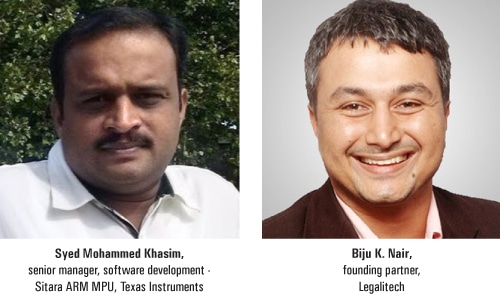 “Today, every new security feature that we build is available for free for public repositories. It is the main source of developing open source software. If you look up the top 10 Metaverse projects on Google, you will find that they are all available on GitHub. The role of GitHub in the Metaverse will be very similar to the role that GitHub has played in the large scale success and adoption of technologies like TensorFlow for AI, or Docker and Kubernetes for containerisation, orchestration, Hyperledger, etc. GitHub will continue to provide the best platform for software development,” she adds.
“Today, every new security feature that we build is available for free for public repositories. It is the main source of developing open source software. If you look up the top 10 Metaverse projects on Google, you will find that they are all available on GitHub. The role of GitHub in the Metaverse will be very similar to the role that GitHub has played in the large scale success and adoption of technologies like TensorFlow for AI, or Docker and Kubernetes for containerisation, orchestration, Hyperledger, etc. GitHub will continue to provide the best platform for software development,” she adds.
But are there any limitations and concerns for the collaborators?
According to Samant, “On one side we have multiple open source projects, while on the other we have tech giants like Google and Microsoft that are already investing big dollars in open source. No one company holds the monopoly for any component today. They are bound to come together and work, as each one brings a different value to the table. We will see more standardisation across some of the underlying fundamental blocks to ensure compatibility. For instance, Linux started as an open source project while Microsoft Windows was totally closed source; yet, they still have a number of partnerships.”
Data privacy
There are already a lot of copyright and patent infringement cases around data privacy as many open source projects are being used without the consent of the original creator. Although we have better control over such scenarios in the real world, this is not the case in the Metaverse as the person is not physically present there. It is not clear yet if the virtual property in the Metaverse will have any analogy in the physical world.
“When it comes to hardware, technology has evolved exponentially in terms of security, power and features. Every smart device today is connected to a network, which is also exposing it to various security threats. So semiconductor companies, too, are focusing on resolving these security threats,” says Khasim.
There could be trademark issues too. Biju Nair says, “Let us say you have a trademark in the physical world but have no presence in the virtual world. Then the chances of you getting an injunction for trademark misuse are very low. Such a case has already been brought before a US court — E.S.S. Entertainment versus Rock Star Videos. The court ruled that the depiction of a physical world trademark in any video game does not infringe on the original trademark, as the video game is an artistic expression protected by the First Amendment. So you may not be protected in the Metaverse unless you have some sort of presence there.”
Nair adds, “Companies need to revisit their existing agreements, see what rights have been provided to them, and plan accordingly. They also need to check if they have filed for the trademark for virtual goods or not, because if they don’t do that they will be at risk of losing the rights for those goods in the Metaverse workspace.”
There are a lot of legalities that need to be looked at and addressed separately in the Metaverse. Nonetheless, the way forward is exciting and interesting as there is still a lot to be explored and developed in this new virtual world.
This article is put together from a panel discussion at ‘Open Source Summit: Frontiers of Innovation 2022’, an event co-hosted by Samsung and IEEE Bangalore.

